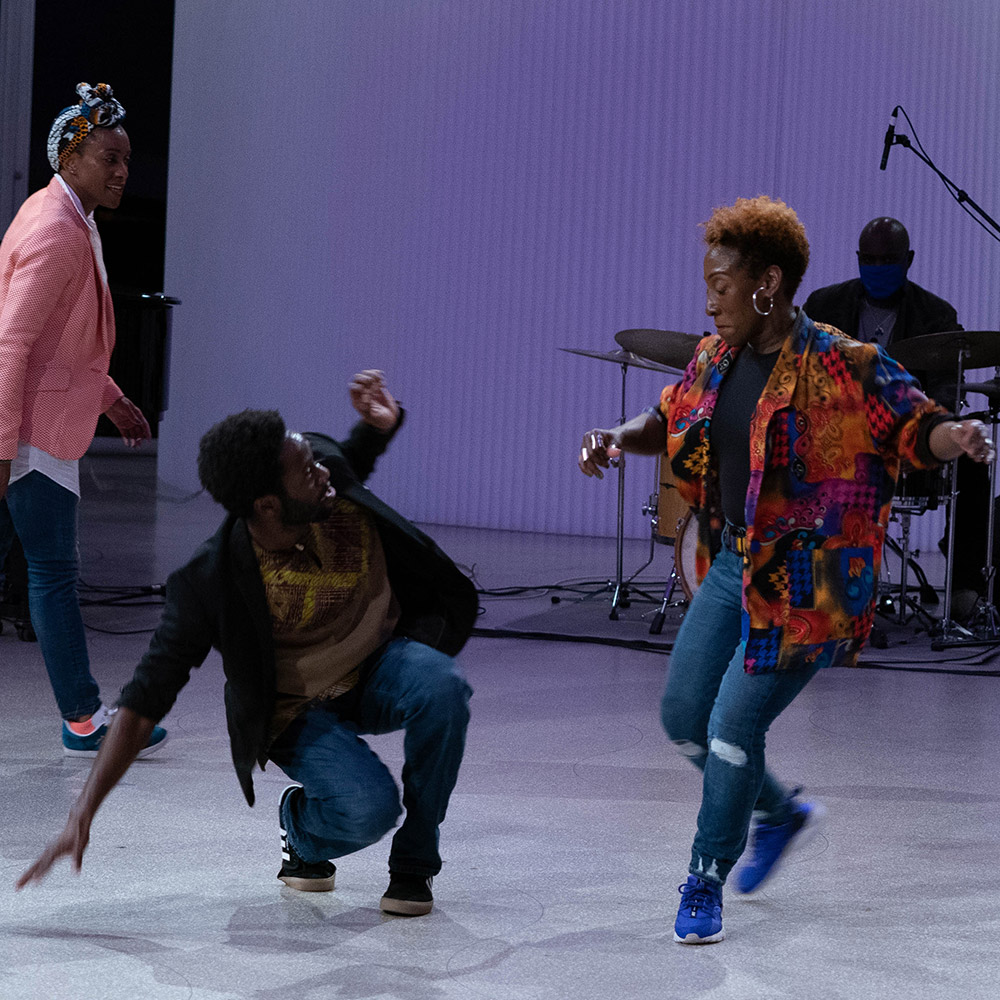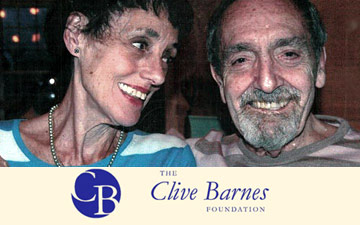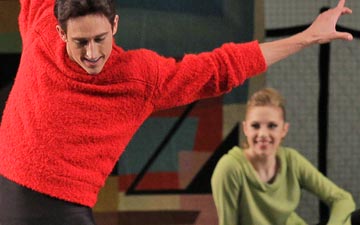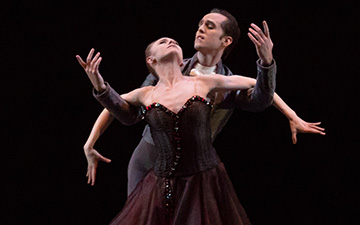
© Titus Ogilvie-Laing. (Click image for larger version)
LaTasha Barnes
The Jazz Continuum
★★★★✰
New York, Guggenheim Museum
19 May 19 2021
www.instagram.com/tasha_b_va
www.guggenheim.org
The Guggenheim Museum has a series of twelve one-night only half hour performances developed in its Works & Process bubble residencies. Among them, The Jazz Continuum is the second of three works I’m seeing that explore different ways to combine various strands of African American vernacular dance. LaTasha Barnes started out as an expert house dancer, added hiphop forms, and then became a contest-winning exponent of Lindy Hop, while continuing to imaginatively mix her idioms as a solo dancer. She wanted Black dancers dedicated to contemporary Black vernaculars to also immerse themselves in the jazz dance world of the Lindy. The very engaging Jazz Continuum is the result.
Masked and peering down at the floor of the Guggenheim rotunda from our socially distanced perches along the Guggenheim spiral, we can see a grand piano, a drum set, a place for a horn player, and two turntables, before the musicians come in. Jon Thomas, the pianist and musical director, Ulysses Owens Jr. on drums, Christopher McBride on alto saxophone, and Britney Brown the DJ start up before Barnes and six other dancers circle in, rocking back and forth.
Despite the rotunda’s overly reverberant acoustics, the jazz band sounds enticingly propulsive as the dancers devolve into three Lindying couples. Throughout The Jazz Continuum we’ll see formations change and dissolve, double lines, lines interweaving, circles, dispersals of individuals, and changes in dance forms. The jazz band gives way to recorded music or the dj’s turntabling, if the acoustics aren’t kind even though the music is muted, and only the jazz band rings out. Between lines or amid circles, solo dancers strut their stuff, showing off hiphop and other moves and individual styles. And periodically six of the dancers form couples to Lindy.
Although much is choreographed, by Barnes and others, the choreography often allows a vernacular looseness, reinforcing an attractive geniality. There’s both structure and informality. The solos, however virtuosic, aren’t competitive. Sometimes, as in an African dance circle, one dancer dances with another to introduce that dancer to the solo spot.
Everyone wears jeans, sneakers, and jackets of different colors – I identify them by their jackets, while watching them strutting, hopping, kicking high, and soloing. The woman in light pink impresses with quick footwork and later goes to the floor in breaking moves. Men make bent-legged splits. A man in a darker pink jacket jumps with knees bent, soloing with rapid legs. A man in a maroon jacket swivels his feet as he shifts back and forth, and later solos with pumping hips and tumbles. A woman in an orange jacket makes quick turns and jumps on bended knees. A man in a black jacket gets down to the floor in breaking and jazzy ways.
I see moments reminiscent of African dance steps, shifts of hip and shoulder and torso, lots of hiphop breaking, popping and locking, Lindy kicks, twists, and quick steps, jumps, splits, tumbles – all kinds of combinations. Barnes, in multi-color jacket, solos, too, and notably, getting down with bent knees, going lower, turning quickly. Later she makes rapid signals with sharp arms as she dances. But good as she is, after seeing her do remarkable extended solos evolving in interesting, unusual ways on YouTube, I know that without the brevity of this pandemic time-limited piece, she has more to offer.
This is also likely true of the other dancers, all very good. Perhaps when The Jazz Continuum is danced at Jacob’s Pillow in August, they’ll be more time for showing off just what they can do. On YouTube you can catch Barnes Lindying with rapid precision with a partner or soloing in her distinctive combinatory way at Lindy events.
As The Jazz Continuum progresses, we see more feats – splits and jumps and turns. When they Lindy we see an air lift or two. It’s hardly Hellzapoppin’, the 1941 movie where the Lindy reaches a near impossible acme, but still lots of fun to see. A connection to that era is choreography in one section from a piece by Chester Whitmore and Norma Miller, the last survivor of Whitey’s Lindy Hoppers, who died at 99 in 2019. Mickey Davidson, from a generation between Miller’s and Barnes’, choreographed Lindy in another section.
The feats continue as the Continuum dancers duckwalk in unison, jumping, too, and duckwalk into a circle. They walk around to saxophone and piano. As the musicians wail, the dancers huddle in a tight circle, arms linked, then turn their heads and arms skyward.
As with Omari Wiles’ Les Ballet Afrik a couple of weeks earlier, the Guggenheim’s pdf program gives no bios for the dancers, but only their Instagram handles. I don’t find that helpful, so I Googled them. Most – Michele Byrd-McPhee, founder of Ladies of Hip-Hop, Ray F. Davis, Duane Lee Holland, Jr., a hiphop academic who danced with Rennie Harris – have extensive hiphop backgrounds, though they may also be involved with other styles. Alain Lauture, a Haitian American actor, as Hurrikane is into house, freestyle, and, in particular, locking. Young Reyna Nunez has little on Google. And Shana Maria Weaver, a jazz vocalist, immersed herself in Swing with Norma Miller and Chester Whitmore, among others.

© Titus Ogilvie-Laing. (Click image for larger version)
LaTasha Barnes centers African American jazz dancing on the Lindy Hop, and perhaps it’s right that this enduring world-wide style from the 1930s, when jazz was immensely popular, can be called central. But African Americans have been dancing to jazz since its beginnings, and still are, along with many other people, to an evolving array of jazz and dance styles. The Jazz Continuum is part of this continuum, and a welcome one.

















You must be logged in to post a comment.